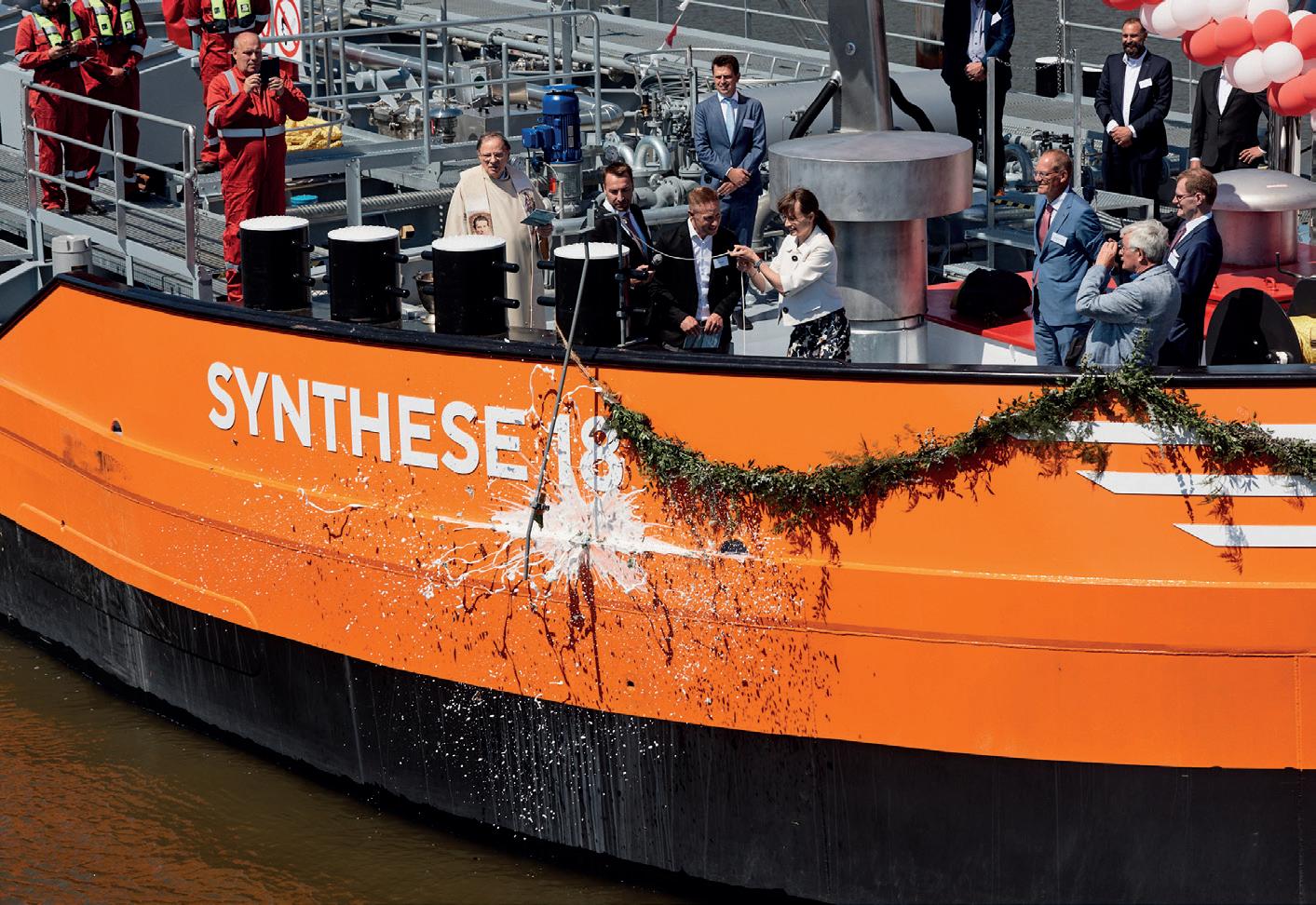
2 minute read
HGK launches latest addition
TOMORROW’S TANK BARGE
NEWBUILDING • HGK SHIPPING IS CONTINUING TO GEAR UP TO MEET CHANGING ENVIRONMENTAL CONDITIONS ON EUROPE’S INLAND WATERWAYS, AS ILLUSTRATED BY ITS LATEST NEWBUILDING
HGK SHIPPING HAS put its latest new tank barge into service, following a naming ceremony in Rotterdam on 15 June. The innovative Type C tanker Synthese 18 was built in Romania at the Santierul Naval Orsova shipyard and outfitted at the Scheepsreparatiebedrijf De Gerlien van Tiem shipyard in Druten, the Netherlands. The new vessel will be used to transport liquid chemicals on the Rhine and its tributaries.
This newest addition to the HGK fleet combines a design that is optimised for shallow water operations together with a diesel-electric drive system. “Thanks to our strategic programme for constructing new vessels, we’re laying the foundation for inland waterway shipping, which will meet the current and future requirements for sustainable and reliable transport operations,” says Steffen Bauer, CEO of HGK Shipping. “We’ll then manage to organise the transformation process towards providing decarbonised inland waterway shipping together with industry.”
“Synthese 18 marks a real milestone in transporting liquid chemicals on European waterways,” adds Norbert Miexner, who heads HGK Shipping’s liquid chemicals business unit. “It will enable us to maintain our role as a reliable partner for industry even during periods when water levels are low.”
INNOVATIVE ARRANGEMENT This latest new tank barge is designed for a maximum payload capacity of 2,700 tonnes but is designed in such a way that it can still carry a 300-tonne load even if the water depth is just 1.05 metres. This arrangement will help ensure reliable supplies for the chemical industry in future, even if the water level on the river Rhine is critically low, as it has been increasingly often in recent years.
The shallow draught is made possible by the optimised uplift features of the vessel’s hull, which has been achieved by an ingenious arrangement if such components as the loading system and the drive technology. The vessel, which is 110 metres long and 11.45 metres wide, was developed at HGK Shipping’s Design Center, as have all other recent additions to the company’s fleet, and was designed in close cooperation with the transport management experts at Wijgula in Druten, which will operate the vessel with freight.
“Numerous practical optimisation measures have been included in the design of Synthese 18,” explains Tim Gödde, director of the Ship Management business unit at HGK Shipping. “Our shipbuilding engineers cooperated closely with the turnkey shipyard from the very first ideas in 2020. Together, we’ve managed to significantly reduce the CO2 emissions per tonne-kilometre even further. Although the shape of the bow and stern are unconventional – among other things, the vessel is equipped with a so-called bulbous bow – the intelligent power management system ensures that the power that is available (1,200 kW) is fed in and used in the best possible manner. The stainless steel tanker demonstrates that a combination of sustainability and reliability of supplies doesn’t have to conflict with a high tonnage level per trip.”
HGK Shipping, part of Häfen und Güterverkehr Köln, is a long-standing partner of the chemical industry and supplies various industries with light and heavy liquid chemical products as well as non-hazardous liquid goods. The fleet of tankers in the company’s Liquid Chemicals business unit transports some 6m tonnes of liquid goods annually on the river Rhine and its tributaries, in the German north-west canal region as well as in Belgium, France and the Netherlands. www.hgk.de










